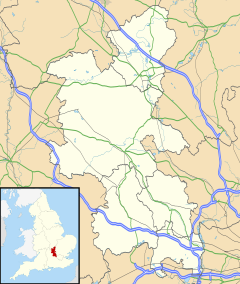Wycombe, Bucks
| High Wycombe | |
|---|---|
 Crest of High Wycombe. Motto: "Industria ditat" "Industry enriches" |
|
 High Wycombe Guildhall, located at the end of the High Street |
|
| High Wycombe shown within Buckinghamshire | |
| Population | 120,256 (2011) |
| OS grid reference | SU867929 |
| District | |
| Shire county | |
| Region | |
| Country | England |
| Sovereign state | United Kingdom |
| Post town | High Wycombe |
| Postcode district | HP10-15 |
| Dialling code | 01494 |
| Police | Thames Valley |
| Fire | Buckinghamshire |
| Ambulance | South Central |
| EU Parliament | South East England |
| UK Parliament | |
| Website | www |
High Wycombe (/ˌhaɪ ˈwɪkəm/), often referred to as Wycombe, is a large town in Buckinghamshire, England. It is 29 miles (47 km) west north west of Charing Cross in London; this information is also engraved on the Corn Market building in the centre of the town. It is also 17 miles (27 km) south of the county town of Aylesbury, 27 miles (43 km) southeast of Oxford and 9 miles (14 km) north of Maidenhead. According to the 2011 census High Wycombe has a population of 120,256 making it the second largest town in the county of Buckinghamshire after Milton Keynes. High Wycombe Urban Area, the conurbation of which the town is the largest component, has a population of 133,204.
High Wycombe is mostly an unparished area in the Wycombe district. Part of the urban area constitutes the civil parish of Chepping Wycombe, which had a population of 14,455 according to the 2001 census – this parish represents that part of the ancient parish of Chepping Wycombe which was outside the former municipal borough of Wycombe. Wycombe is a combination of industrial and market town, with a traditional emphasis on furniture production. There has been a market held in the High Street since at least the Middle Ages.
The name Wycombe appears to come from the river Wye and the old English word for a wooded valley, combe, but according to the Oxford English Dictionary of Place-Names the name, which was first recorded in 799-802 as 'Wichama', is more likely to be Old English 'wic' and the plural of Old English 'ham', and probably means 'dwellings'; the name of the river was a late back-formation. Wycombe appears in the Domesday Book and was noted for having six mills. The town once featured a Roman villa (built 150–170 AD) which was excavated three times, most recently in 1954. Mosaics and a bathhouse were unearthed at the site on what is now the Rye parkland. High Wycombe was the home of 19th century Prime Minister Benjamin Disraeli.
...
Wikipedia

